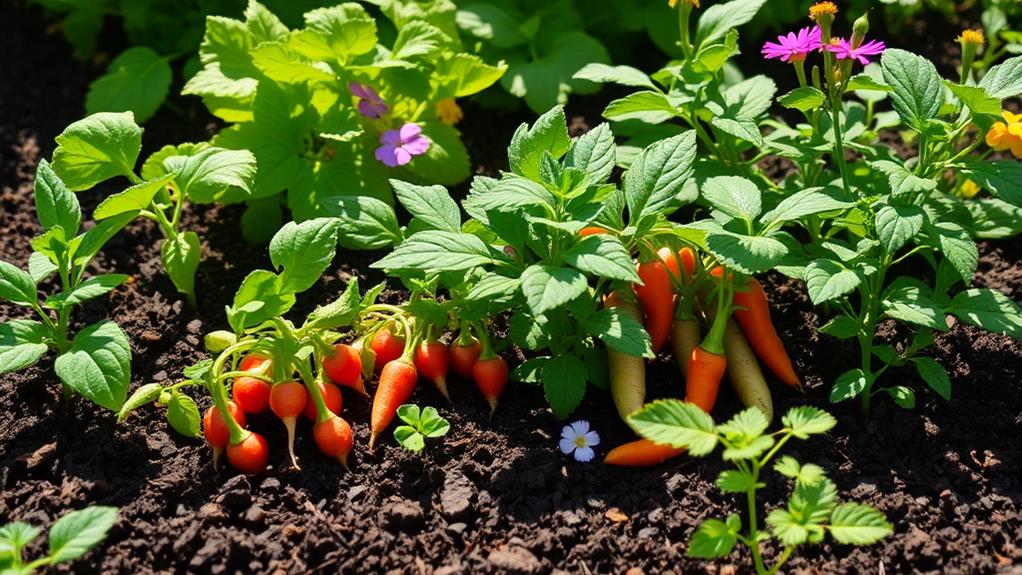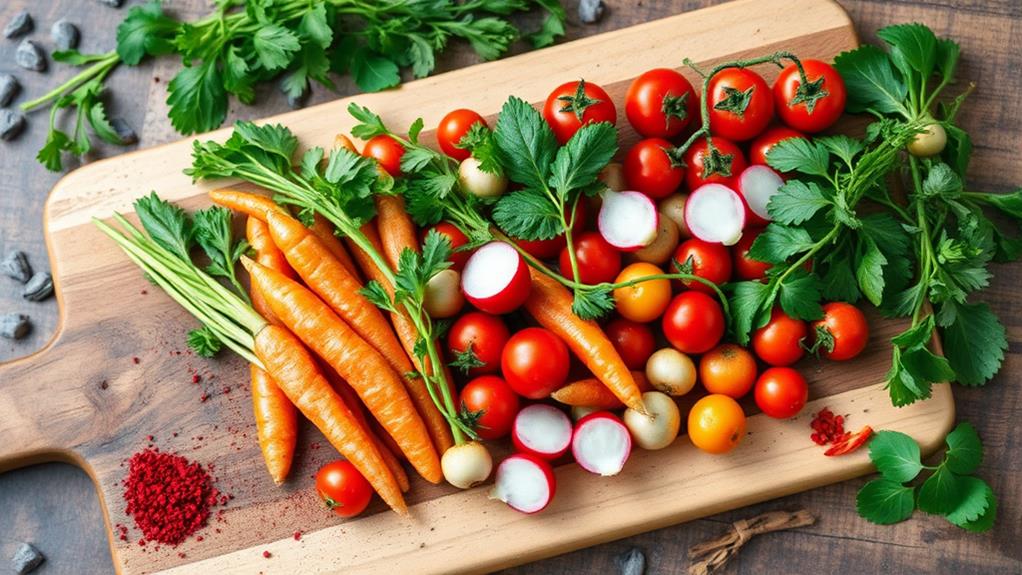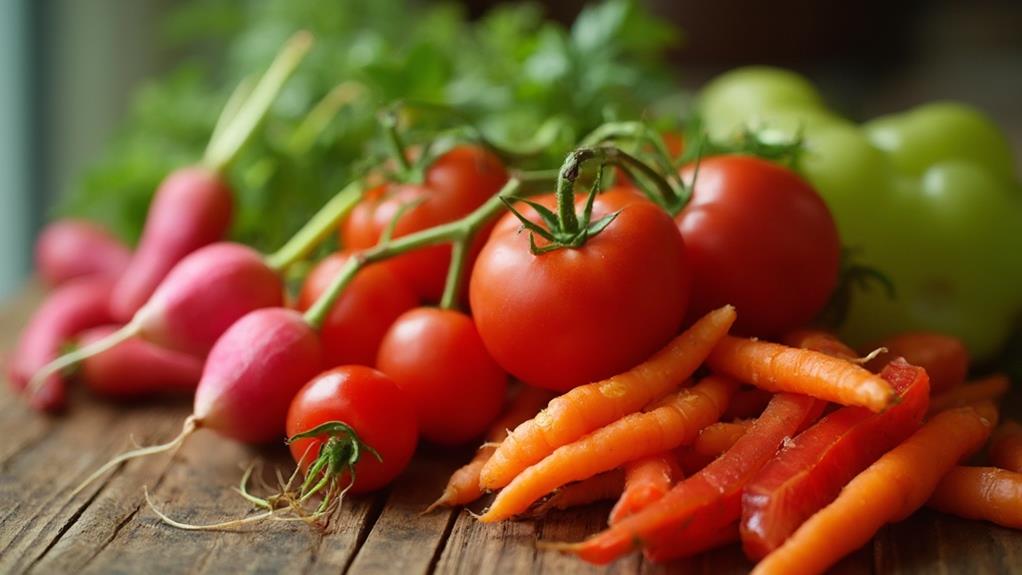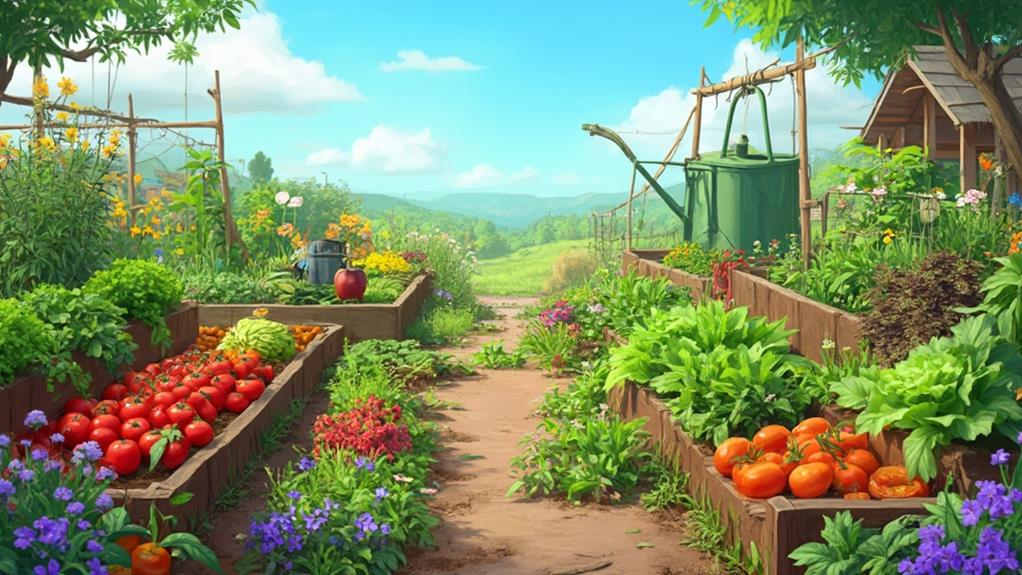If you’re considering enhancing your garden with small vegetables, you’re on the right track. These compact plants not only thrive in limited spaces but also pack a nutritional punch that’s hard to ignore. From the crisp bite of baby carrots to the delicate flavor of microgreens, small vegetables can transform your meals in unexpected ways. You might be wondering which varieties are worth your time or how to cultivate them effectively. Let’s explore some practical tips and discover the best small vegetables to grow, ensuring your garden flourishes with flavor.
Key insights
- Small vegetables are nutrient-rich, providing essential vitamins and minerals for a healthy diet.
- Ideal for limited spaces, they thrive in containers and require less garden area.
- Quick-growing options like radishes and microgreens allow for faster harvests.
- Cooking techniques such as roasting and sautéing enhance their flavor and nutritional value.
- Growing small vegetables offers satisfaction and encourages sustainable food practices.
Benefits of Small Vegetables

Small vegetables pack a powerful punch when it comes to nutrition and flavor. You’ll find that they often boast high nutritional value, packed with vitamins, minerals, and antioxidants essential for your health. When you incorporate these tiny powerhouses into your meals, you’re not just enhancing flavor; you’re also boosting your overall well-being.
Another great benefit is their adaptability to limited gardening space. If you’re working with a small backyard or even just a balcony, small vegetables are perfect for container gardening. They thrive in tight spots, allowing you to cultivate a diverse array of produce without overwhelming your space.
Imagine growing cherry tomatoes, radishes, or baby carrots all within arm’s reach!
Additionally, small vegetables often mature faster than their larger counterparts. This means you’ll be enjoying fresh produce sooner, making your gardening efforts even more rewarding.
By choosing small vegetables, you’re maximizing both your nutritional intake and your gardening potential, all while enjoying the satisfaction of growing your own food.
Best Small Vegetables to Grow
When it comes to choosing the best small vegetables to grow, you’ll find a variety of options that not only fit into limited spaces but also deliver big on flavor and nutrition.
Some popular varieties include radishes, microgreens, and baby carrots. These veggies thrive in compact gardens, containers, or even on your windowsill.
Radishes, for example, are quick to mature and can be harvested in just a few weeks. They prefer cooler temperatures and well-drained soil, making early spring or fall ideal growing conditions.
Microgreens are another fantastic choice; they’re packed with nutrients and can be grown indoors year-round. Just provide them with a sunny spot and keep the soil moist.
Baby carrots, while slightly more demanding, can yield delicious results in a small garden. They require loose, sandy soil and consistent moisture to grow properly.
You might also consider dwarf varieties of peppers and tomatoes, which are perfect for pots and can thrive in sunny locations.
With these selections, you can cultivate a vibrant, productive garden, no matter how limited your space may be.
Happy gardening!
Tips for Cultivating Small Vegetables

Cultivating small vegetables can be a rewarding experience, especially when you follow a few key tips.
First, consider container gardening. It’s perfect for small spaces and allows you to control soil quality and drainage. Choose containers that are at least 6-12 inches deep for root vegetables like radishes and small carrots.
Next, embrace vertical planting to maximize your growing area. Use trellises, hanging pots, or vertical garden systems to grow climbing vegetables like peas and small cucumbers. This method not only saves space but also improves air circulation and sunlight exposure.
Make sure you select the right soil mix. A lightweight, well-draining potting mix works best for container gardening, ensuring your small vegetables thrive.
Don’t forget to provide adequate water; keep the soil consistently moist but not soggy.
Lastly, rotate your crops each season to prevent soil depletion and pest buildup.
By following these tips, you’ll create a flourishing garden of small vegetables that enhances your culinary experiences.
Happy gardening!
Cooking With Small Vegetables
Cooking with small vegetables opens up a world of flavor and creativity in the kitchen. These bite-sized beauties can be the stars of your dishes, offering unique tastes and textures.
When it comes to preparation techniques, consider roasting, sautéing, or steaming. Roasting caramelizes their natural sugars, intensifying their flavors, while steaming preserves their vibrant colors and nutrients.
Pairing suggestions are key to enhancing your meals. For example, small carrots and radishes work well with herbs like dill or parsley. Baby zucchini pairs beautifully with garlic and olive oil, making for a fresh side dish.
Don’t forget about small peppers; their sweetness complements savory dishes, especially when stuffed or grilled.
Experimenting with small vegetables can elevate your culinary skills. Try mixing different types for a colorful salad or incorporating them into stir-fries for a quick, nutritious meal.
Remember to keep the cooking time short to maintain their crunch and flavor. By using these techniques and pairing suggestions, you’ll create vibrant and delicious dishes that highlight the charm of small vegetables.
Creative Recipe Ideas

Small vegetables not only shine on their own but also lend themselves to a variety of creative recipe ideas that can impress any palate. One way to elevate these tiny gems is by experimenting with unique pairings. For instance, try roasting baby carrots with honey and thyme for a sweet and savory treat.
You can also create seasonal dishes by incorporating small vegetables like radishes into fresh salads. Toss them with arugula, feta, and a lemon vinaigrette for a vibrant dish that celebrates spring.
Another idea is to grill miniature zucchini alongside cherry tomatoes and drizzle them with balsamic glaze for a colorful side.
If you’re feeling adventurous, whip up a small vegetable stir-fry using snow peas, baby corn, and sliced bell peppers. Add a splash of soy sauce and sesame oil for an Asian-inspired flair.
Don’t forget about small potatoes! They make a delightful hash when sautéed with onions and bell peppers, perfect for breakfast or brunch.
With these creative recipe ideas, you’ll not only enjoy the flavors of small vegetables but also showcase their versatility in your cooking.
Frequently Asked Questions
What Are the Nutritional Differences Between Small and Large Vegetables?
When comparing small and large vegetables, you’ll notice some key nutritional differences.
Smaller veggies often pack a more intense flavor, which can enhance your dishes. Cooking methods also play a role; smaller vegetables tend to cook faster, preserving nutrients better than their larger counterparts.
While both sizes offer essential vitamins and minerals, choosing the right size can affect taste and texture, making your meals more enjoyable and nutritious.
How Do Small Vegetables Compare in Price to Larger Varieties?
When you look at price trends, small vegetables often cost less than their larger counterparts. This price difference can be attributed to consumer preferences; many shoppers opt for smaller varieties due to convenience and perceived freshness.
However, prices can vary based on seasonality and supply. You’ll find that local markets might offer competitive pricing on small vegetables, making them an attractive choice for your meals without breaking the bank.
Are Small Vegetables Easier to Store Than Larger Ones?
Imagine packing a suitcase for a trip; smaller items fit snugly and leave room for more.
Similarly, small vegetables are often easier to store than their larger counterparts.
With effective storage techniques, like using breathable bags or containers, you can maximize their shelf life.
They take up less space in your fridge and can be used in a variety of dishes, making meal prep a breeze.
Plus, you’ll waste less food!
Can Small Vegetables Be Grown in Containers?
Yes, you can grow small vegetables in containers!
Container gardening is a fantastic way to maximize space, and it’s perfect for urban settings. Dwarf varieties of vegetables, like cherry tomatoes or mini peppers, thrive in pots and require less room.
Just verify you choose the right sized container and provide proper drainage.
With the right care, you’ll enjoy fresh produce right from your patio or balcony, making gardening accessible and fun!
What Pests Are Common With Small Vegetable Plants?
When you grow plants, pests can be a real headache. Common pests like aphids, spider mites, and whiteflies often invade your garden.
To tackle these issues, focus on pest management strategies that incorporate organic solutions. You can use neem oil or insecticidal soap to deter pests naturally.
Additionally, introducing beneficial insects, like ladybugs, can help control pest populations without harming your plants or the environment.
Stay vigilant and act quickly for the best results!
Summary
Incorporating small vegetables into your garden is like adding vibrant jewels to your plate. Their quick growth, nutritional benefits, and versatile cooking options make them a must-have for any gardener, especially in limited spaces. By choosing the right varieties and following simple cultivation tips, you can enjoy a bountiful harvest in no time. So roll up your sleeves, dig in, and savor the satisfaction of growing and cooking with these delightful little gems!










